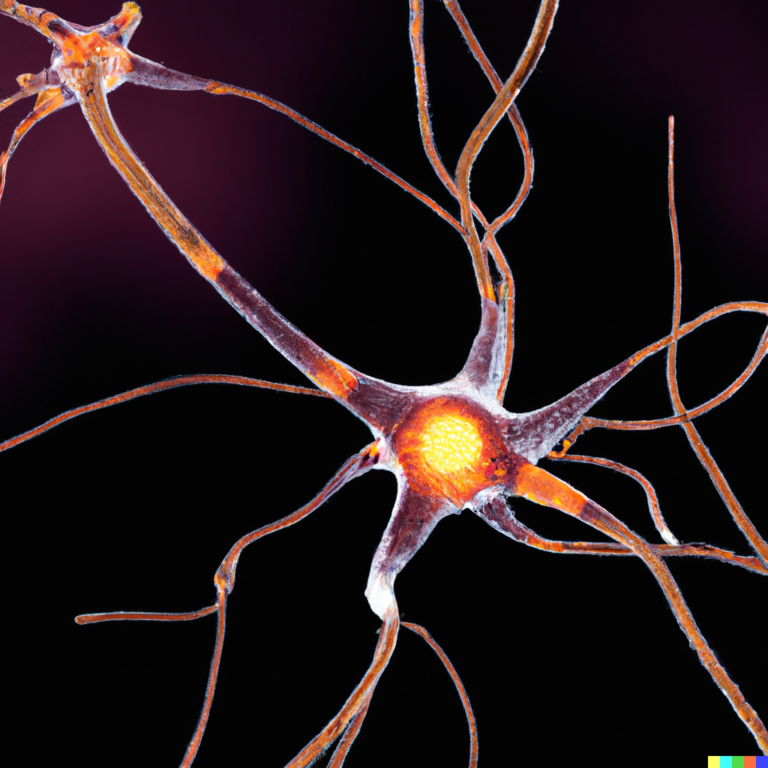Autophagy dysfunction has been identified as a key factor in the development and progression of Alzheimer’s disease, a degenerative neurological disorder that affects millions of people worldwide. Autophagy, derived from Greek words meaning “self-eating”, is a natural process in our body that plays a crucial role in eliminating damaged or dysfunctional cells and recycling cellular components to maintain overall health and function.
In healthy individuals, autophagy acts as a self-cleaning mechanism, breaking down abnormal proteins and clearing out other cellular waste. However, in Alzheimer’s patients, this process becomes impaired, causing a buildup of toxic substances and malfunctioning cells in the brain. This buildup leads to the formation of amyloid plaques and tau tangles, which are considered hallmarks of Alzheimer’s disease.
To understand how autophagy dysfunction contributes to Alzheimer’s disease, we must first understand the role of autophagy in our body. Autophagy is a highly regulated process that involves the formation of double-membrane structures called autophagosomes. These structures engulf damaged or dysfunctional components in the cell and fuse with lysosomes, where their contents are broken down and recycled.
In Alzheimer’s disease, this process is disrupted due to multiple factors. One of the main culprits is the accumulation of toxic proteins. In healthy individuals, autophagy can efficiently eliminate these proteins. However, in Alzheimer’s patients, the abnormal proteins interfere with the proper functioning of autophagosomes, leading to their malfunction and thus, impaired clearance of these toxic substances.
Moreover, studies have shown that certain genetic mutations associated with Alzheimer’s disease can also disrupt autophagy. One such mutation is in the gene coding for a protein called presenilin 1, which is involved in the formation of autophagosomes. Mutations in this gene have been linked to an increase in amyloid plaque formation and a decrease in autophagy activity.
Another factor contributing to autophagy dysfunction in Alzheimer’s disease is oxidative stress. Oxidative stress is caused by an imbalance between the production of free radicals and the body’s ability to neutralize them. In Alzheimer’s disease, this imbalance can lead to damage to cellular structures, including those involved in autophagy. As a result, autophagy activity decreases, and toxic substances continue to accumulate in the brain.
Autophagy dysfunction is not only involved in the development of Alzheimer’s disease but also in its progression. As the disease advances, the ability of cells to initiate and maintain autophagy declines. This leads to a vicious cycle where the accumulation of toxic substances causes further damage, resulting in more autophagy dysfunction.
The implications of autophagy dysfunction in Alzheimer’s disease go beyond just the buildup of toxic proteins. Recent studies have also shown that impaired autophagy can lead to inflammation in the brain. Inflammation is a natural response of our immune system to harmful stimuli; however, in Alzheimer’s disease, chronic inflammation can contribute to the death of neurons and further progression of the disease.
Understanding the role of autophagy in Alzheimer’s disease has opened up new avenues for potential treatments. Researchers are exploring ways to boost autophagy activity as a means to clear out toxic proteins and slow down the progression of the disease. One potential strategy is the use of drugs that can enhance autophagy, such as rapamycin and trehalose.
Furthermore, lifestyle factors such as diet and exercise have also been found to play a role in autophagy dysfunction. A nutrient-rich diet and regular physical activity have been shown to stimulate autophagy, thus potentially reducing the risk of developing Alzheimer’s disease.
In conclusion, autophagy dysfunction has been identified as a critical factor in the development and progression of Alzheimer’s disease. The accumulation of toxic proteins, genetic mutations, oxidative stress, and chronic inflammation all contribute to the impairment of this vital cellular process. Further research into understanding the mechanisms of autophagy dysfunction and identifying potential treatments could lead to breakthroughs in the treatment of Alzheimer’s disease.





